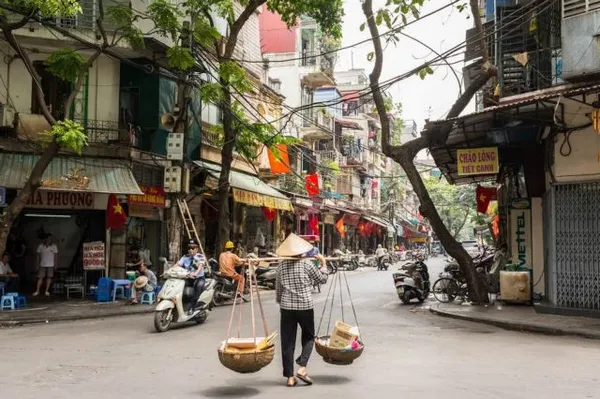 Expat Corner
Expat Corner

Autumn sunlight colours busy Phùng Hưng street in downtown Hà Nội, but the street also seems brighter these days as murals appear on boring stone vaulting.
 |
| Stunning: An almost complete mural at the site. — VNS Photo Lê Hương |
By Lê Hương & Hồng Vân
Autumn sunlight colours busy Phùng Hưng street in downtown Hà Nội, but the street also seems brighter these days as murals appear on boring stone vaulting.
Six painters from South Korea together with dozens of Vietnamese workers have been working at the site for the past few days carrying out an art project by Hoàn Kiếm People’s Committee, UN-Habitat and the Korea Foundation.
Four of the sealed 131 viaduct spans have been opened to traffic again.
The South Korean artists will paint eight murals on seven vaults, while Vietnamese artists will be in charge of other ten murals, one mural will be a joint-work by both South Korean and Vietnamese artists. The whole project will be completed by the end of this month.
“In 2016, our foundation and UN Habitat implemented a similar mural painting project in Tam Thanh Village in the central province of Quảng Nam. And this year, Hoàn Kiếm People’s Committee invited us again to join a similar, public decorating project.” said Park Kyoung Chul, director of the Korea Foundation, “We hope to create a cultural space for Vietnamese and international people. Besides, this year marks the twenty fifth anniversary of South Korea- Việt Nam diplomatic friendship, so the project honours that.
“The topics for the paintings are memories of old Hà Nội,” he said, “Vietnamese artists will not find the topic as difficult as the South Korean artists. We hope to bring a fresher look to a Hà Nội through the eyes of foreign guests.
 |
| Hard at work: An artist prepares part of a site. VNS Photo Lê Hương |
Lee Gang Jun, a curator who has joined the project in Tam Thanh Village, has been invited to act as the art director for the project while another six artists were chosen in selection rounds," Park said.
“I have been living in Việt Nam for the past three years. The city has various beautiful places, historic relics, restaurants and food courts. We hope when the project finishes, this street will be another attraction for local youth and tourists. It will match with the surrounding existing Old Quarter.”
According to Lee, the local builders help installed the foundation surface for the paintings. The new sheets were attached to the vaults with metal frames and match the vault areas. Then painters uses outdoor acrylic paints or other materials, including metals and electric wires for the works.
“The previous project we implemented in a quiet rural village,” Lee said, “This time we work in the middle of the capital, which gathers the history, culture and tourism of the nation.”
Lee said that before coming to the site, there were concerns about how to paint murals of old Hà Nội so that Vietnamese people sensed our enthusiasm for the city.
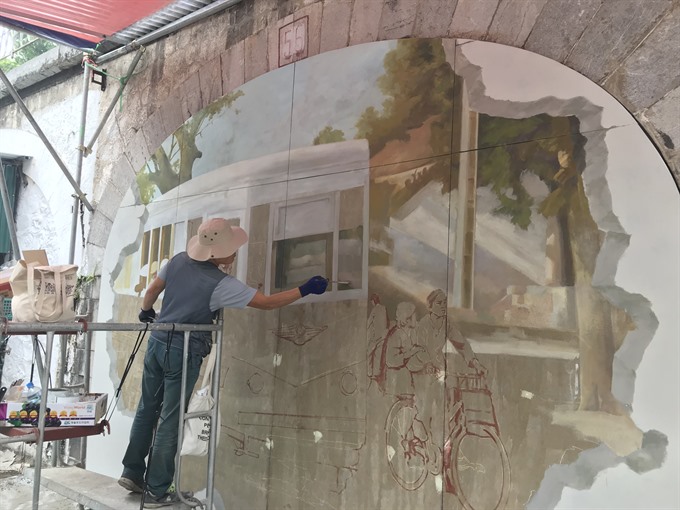 |
| Past glory: All of the murals feature Hà Nội in the old time. VNS Photo Lê Hương |
“When I reached the site and looked at such beautiful stone vaults, I was worried that our new paintings could satisfy Vietnamese audiences,” he said, “We will try our best to send the message we put in the paintings to Vietnamese people.”
Lee said they are avoiding drawing directly on the stone surface of the vaults for fear that the paint might not work well on the stone surface, which may absorb rain water.
One of the artists busy at work at the site, Lee Seung Hyun, from Seoul, is visiting Việt Nam for the first time.
Among the paintings I have received to draw here, I like the scenes of the Old Quarter. I think such old scenes will help today’s Hanoian imagine the old capital and also may think of a better way to develop the city in the future.
Before going to the city, I marked on my map the places offering the best food in the city to try during my time here. I’m excited to try everything,” he said.
A resident in the street, Đặng Văn Sự, said the street now looked like a tourism hub in Malaysia rather than a grey corner of the city. "I hope Hà Nội will have more beautiful corners of creation like this."
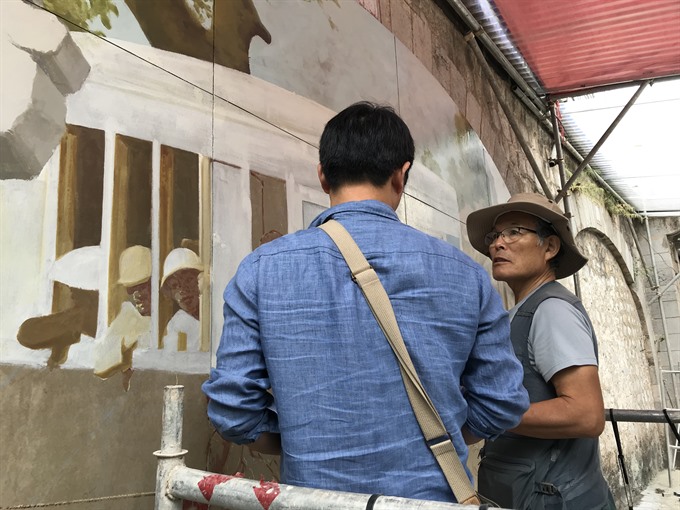 |
| Korean help: Lee Gang Jun, art director of the project (left) talks to a painter at the site. VNS Photo Lê Hương |
The railroad viaduct, which starts from Phùng Hưng-Trần Phú crossroads and runs to Long Biên Train Station, passing through Phùng Hưng and Gầm Cầu streets, is 1.2km long, with a slope steepness of zero to six metres.
The vaults, built in 1900 and finished in 1902, are 3.5m to 4.5m high and cover about 16sq.m area each.
The viaduct is part of the historic Long Biên Bridge, which carries the rail connecting Hà Nội with the port city of Hải Phòng.
The bridge, more than 100 years old, spans three centuries and is considered an important and central part of Hà Nội’s development, as well as history.
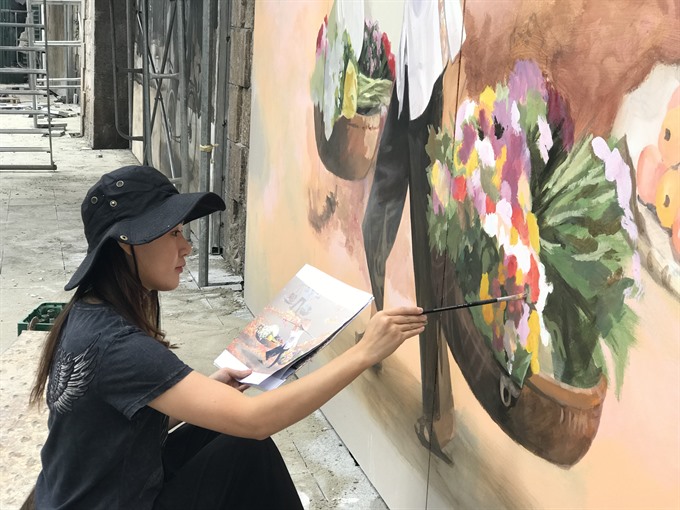 |
| Not long: The whole project is planned to be finished by the end of November. VNS Photo Lê Hương |
In the 1960s, the bridge was an arterial track to transport passengers and commodities.
In 1971, a severe flood occurred in the Red River region; the areas in Phúc Xá, Phúc Tân and Chương Dương were inundated, compelling residents to evacuate the city centre. The vaults under the viaduct, at that time, became a shelter for the people in need.
In the 1970s, diesel locomotives replaced the old steam locomotives, which helped increase the load capacity significantly. In addition to this, the vaults under the viaduct also became a hub for beggars and drug addicts.
Therefore, in the period between 1978 and 1983, up to 127 vaults were sealed with cement to strengthen the viaduct and keep out anti-social elements. — VNS


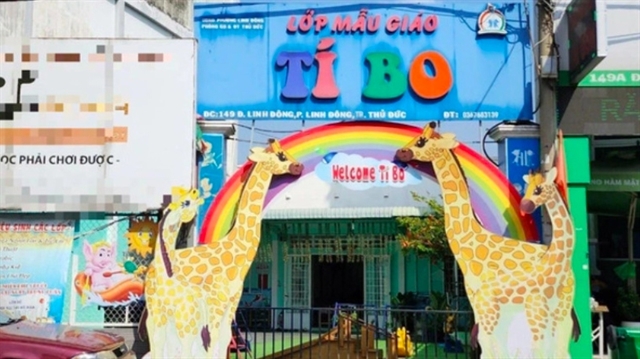
.jpg)
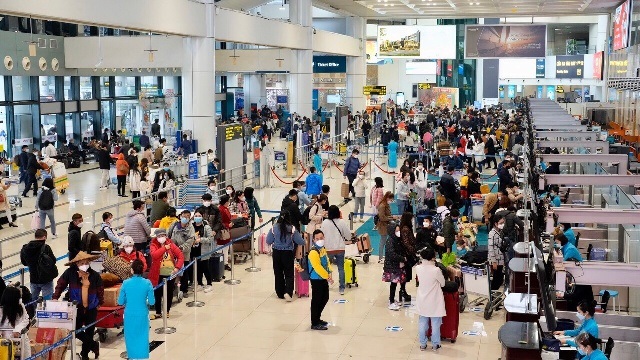



.jpg)
